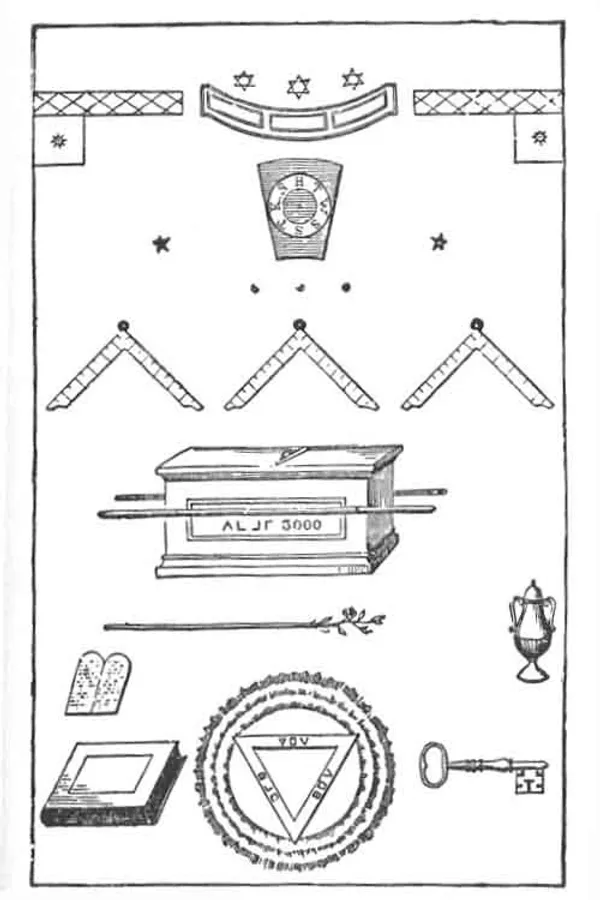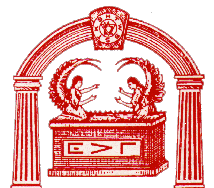Royal Arch Degrees

The Degree of Royal Arch Mason is founded upon the destruction of the first and the building of the second Temple. The ceremonies of the Degree have an interesting and graphic historical setting, and a profound and reverential moral significance. The Royal Arch Degree is the complement of the Master’s Degree, the unfolding into a second volume of the history of that which was lost to its final recovery. Without the Royal Arch, the Master’s Degree is like a song half sung, a tale partly told, or a promise unfulfilled.
The preparatory Degrees conferred in the Chapter are those of Mark Master Mason, Past Master and Most Excellent Master. All are beautiful, all are interesting, all teach valuable lessons, but the Most Sublime Degree of Royal Arch Mason is more august, sublime and important than all that precedes it. It brings to light many essentials of the Craft contained ONLY in this Most Sublime Degree and explains many cryptic passages of the first three Degrees incomprehensible to the Master Mason. Without a knowledge of these the Masonic character cannot be complete.
The Capitular Degrees are a set of four degrees controlled by the Royal Arch Chapter. They center on the construction phases of Solomon’s Temple, with the exception of the degree of Past Master, hence the title of Capitular. The degree of Past Master is the vestigial remnant of the former custom that the degree of the Royal Arch could only be conferred on a Past Master of a Symbolic Blue Lodge. In the United States, these degrees are considered as proprietary to the Royal Arch, while in England there is no Past Master degree as found here, and the Mark Master degree is controlled by its own Grand Lodge. The Most Excellent Master degree is also part of the Cryptic Degree in England. As stated in the forward, the Royal Arch overseas is controlled by Chapters attached to English Blue Lodges. The Royal Arch Chapters have occasionally been referred to as the “Red lodge” in older Masonic publications, though they should more accurately be described as the “Red degrees.” In the United States, all Chapter business is conducted in a Royal Arch Chapter, the other bodies being only opened for the conferral of degrees. Some jurisdictions open Mark Master Lodges as “table lodges,” which act as a social focus for the local York Rite bodies.
Mark Master Degree
The degree of Mark Master is believed to be the oldest degree in Freemasonry and to predate all others by many years. The legend of the degree is singularly instructive and is well founded on statements of Holy Writ, relating to the period in the building of King Solomon’s Temple, atop Mount Moriah in the Holy City of Jerusalem. In the United States, the degree ritual takes place immediately following the death of Grand Master Hiram Abif.
In keeping with the degree’s lesson plan of completing the Fellowcraft degree, it teaches the valuable lessons, including:
-
how to receive wages as a fellow of the craft,
-
education is the reward of labor,
-
a man is remembered by the mark he makes in his life,
-
labor is, itself noble, and
-
time served does not create superiority.
Like the Fellowcraft Degree, the Mark Master Degree is less concerned with the past and future and more with the here and now of our present life. It places emphasis on not judging people or situations on outward appearances but to seek hidden truths. The ritual contains a dramatic message that fraud can never succeed.
The symbol of the degree is a keystone on which are engraved certain mystic letters, the collective meaning of which is explained in the ceremony. In the era of operative stonemasons, each fellow of the craft would place his unique mark on the stones he cut, in order to identify his work and receive the wages due him for his labors. Additionally, in the event of faulty work, enabled the foreman or overseer to identify the workman responsible. Following the ceremony of this degree, each new Mark Master is obliged to choose a distinctive mark and to draw it in his chapter’s register book of marks.


Past Master (Virtual)
The Past Master Degree teaches the candidate that he must first learn to obey before he can rule, to govern himself before he can govern others, and to govern in moderation and propriety.
The degree came into being because, originally, the degree of Holy Royal Arch Mason was conferred by the symbolic (“blue”) lodges only upon actual, installed Past Masters. As Grand Lodges determined from time to time that more men should receive the knowledge imparted in the Holy Royal Arch degree, the Grand Master would dispense a brother to “pass the chair,” meaning that the brother would be summarily installed as Worshipful Master of his lodge, perform one or more ceremonial, pro forma acts (calling for the vote on a motion, recognizing a brother, etc.). The degree of Past Master was instituted to make it possible for all worthy brethren to receive the Holy Royal Arch Degree and to standardize the process for its eligibility.
Most Excellent Master
The Most Excellent Master Degree is, by far, one of the most impressive rituals in all of Freemasonry. It is the only degree that brings forcibly to our attention the completion and dedication of King Solomon’s Temple, atop Mount Moriah in the Holy City of Jerusalem — the very idea upon which all Masonic symbolism has been based. Drawing upon the history recorded in 2 Chronicles 6 and 7, and 1 Kings 7 and 8, the degree depicts celebration of the Temple, its final architectural step, and the installation of the sacred items within the Holy of Holies, while mourning the death of Grand Master Hiram Abif. Thus, it completes the story begun in the ritual of the Master Mason’s degree (3°) in a spectacular, participatory ritual. In this degree, the brother is taught the lesson that he has a responsibility to exploit opportunities to share with less informed brethren his wisdom and Masonic light.



The Royal Arch
The supreme degree of the Holy Royal Arch, as the culmination of the Capitular Degrees, is the climax of Ancient Craft Freemasonry and Masonic symbolism. It is described as “the root and marrow of Freemasonry.”
The ritual presents the story of Jewish history beginning in some of its darkest hours. The City of Jerusalem and the Holy Temple built by Kings Solomon & Hiram, and Grand Master Hiram Abif were destroyed in 586 B.C.E. The people of Israel are being held captive as slaves in Babylon. Forty-eight years later, the events of the Book of Ezra present a brighter, if no less challenging, outlook for the Jewish people. Here, the brother follows Zerubbabel, set free by the Edict of Restoration promulgated by King Cyrus II to return home and engage in the noble and glorious work of rebuilding the Temple of God and the City of Jerusalem.
It is during this rebuilding that they make a discovery, bringing to light the greatest treasure of a Freemason: the long lost Master’s Word. The Holy Royal Arch is a natural progression to reveal the “genuine” secrets following the granting of certain substituted ones and, as such, it truly forms an integral part of Freemasonry.
During their conferral of the Holy Royal Arch degree, a Chapter makes use of its veils, Hebrew tribal ensigns, and other accouterments. There is good reason to believe that the sublime degree of Master Mason, as we now know it, was never intended to be the culmination of the Craft degrees, given its incomplete nature. The ritual of Master Mason’s degree centers around the quest for the Master’s Word and concludes with a story of its loss and substitution pending its rediscovery — a rediscovery made in the Holy Royal Arch degree.
